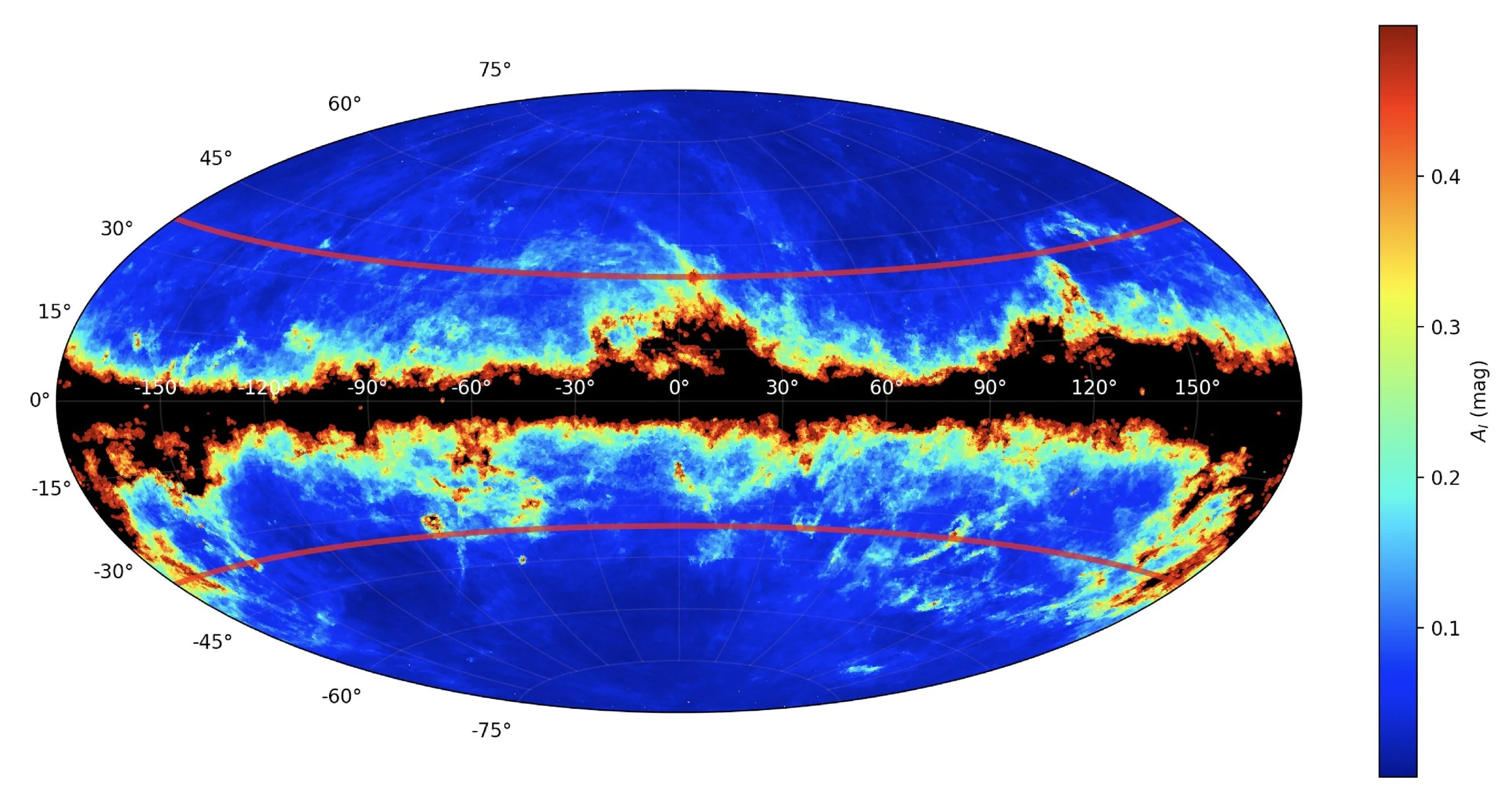"A geometric calibration of the tip of the red giant branch in the Milky Way using Gaia DR3" - Dixon et al. (2023)
Alan Duffy
How do you measure distances in space? There’s no tape measure to stretch between the stars of course, but instead there are a series of techniques that work over ever increasing distances with one technique handing over to the next - the first rung on that distance ladder is Parallax (I once tried to explain this live on national Breakfast TV!) and my student Mitchell Dixon has just published a definitive study on that technique as it maps to the next rung of a special class of stars known as Tip of the Red Giant Branch (TRGB) stars which have a known (or at least calibrated!) brightness that depends on how rapidly the brighten and fade.
At its core, parallax is easy to experience - give a thumbs up to this screen or the wall right in front of you, close one eye and then see how the thumb appears to move relative to the background as you switch between closed eyes. If you have a telescope on Earth looking at the night sky and take an image 6 months apart we have moved from one side of the Solar System in our orbit to the other - thats you looking from one eye to the other - and objects closer to us such as nearby asteroids will appear to move relative to the background more distant objects such as stars.
Let’s do this on a galactic scale and see how stars move relative to each other - the nearby ones will appear to be moving relative to the more distant ones. Now taking the most astonishingly accurate satellite ever built - the Gaia Satellite that can measure the position of stars akin to that of the thickness of the human hair at 1000km distance - and you have a way to map out the exact location of nearby TRGB stars; improving that calibration of their distance - brightness - pulsation relation and letting us better map them into the next galaxies and rung of the distance ladder! PHEW!
